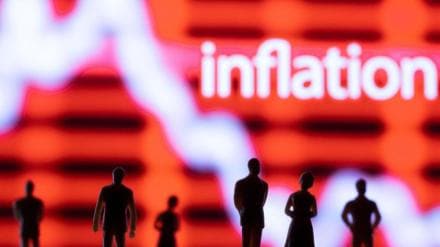Sticky inflation has dashed the hopes of early rates cuts with experts now pencilling in repo rate cut by the Reserve Bank of India (RBI) from December this year. Economists expect a shallow rate cut cycle with RBI likely to lower repo rate by 75 – 100 basis points.
Despite prices showing some decline over the past few months, the RBI has retained CPI inflation projection at 4.5% for the current financial year.
Addressing the press conference after announcing the monetary policy on Friday, RBI governor Shaktikanta Das said the growth-inflation journey is progressing as per expectations, but added that it is the last mile of the journey towards 4%, which will be the most difficult or sticky, and reiterated the need for the number to align with the target.
“The governor points out to the fact that there continues to be risks from food inflation and the summer price changes are visible on the backdrop of a shallow winter price drop. In this context, the RBI would watch out for the pulses and vegetables prices that have seen a recent uptick in prices,” said Indranil Pan, chief economist at Yes Bank.
“With growth expected to remain firm, the last phase of dis-inflation towards the 4% target remains arduous and hence the RBI would be willing to bide its time. We see a shallow rate cut this fiscal, probably starting in December 2024,” he added.
Headline CPI inflation moderated to 4.8% in April 2024 from 4.9% in March and 5.1% in February. CPI food inflation, however, edged up to 7.9% in April from 7.7% in March. With ongoing inflationary concerns, particularly in the food basket, MPC will remain cautious preferring to assess the evolving risks before making any decisions, say experts. “Even though the core inflation has been largely benign, higher food inflation has kept the overall headline inflation higher than the Central Bank’s target of 4%,” said Rajani Sinha chief economist, Care Ratings.
“Apart from elevated food prices, the incremental risk to inflation also stems from the recent uptick in global commodity prices, especially industrial metals,” she said. While expectations of a good monsoon bode well for the overall rural demand and food prices, monitoring its temporal and spatial distribution would be essential, she added. Prices have fallen significantly over the past one year as headline inflation has declined from the peak of 7.3% in the first quarter of 2022-23 to 5% in the fourth quarter of 2023-24.
“The domestic growth dynamics will remain conducive for the RBI to be on a pause, at least in the August policy, as it remains focused on guiding inflation toward the 4% target on a durable basis,” Suvodeep Rakshit, senior economist at Kotak Institutional Equities. “Given our expectations of domestic and global economic conditions, we continue to expect a shallow rate cut cycle (75-100 bps) from the December policy, with the stance changing either in October policy or along with the rate action,” he added.
